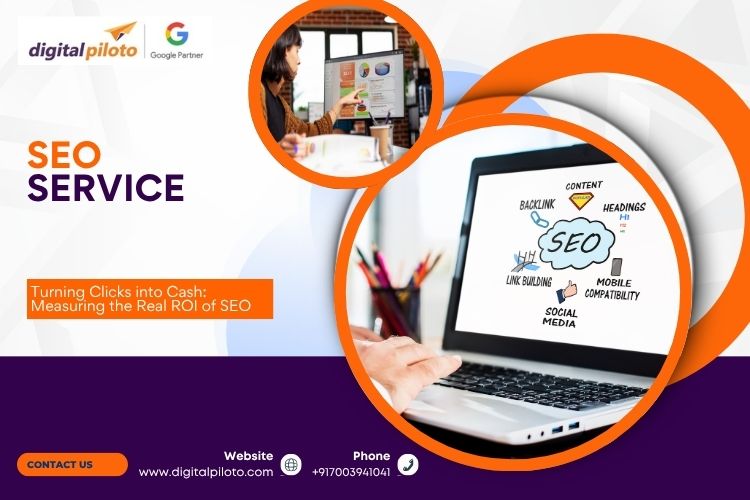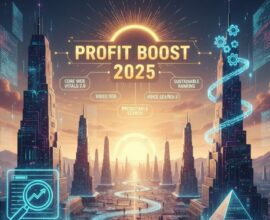Most businesses celebrate website traffic as a success metric—but what if those visitors never convert? In the fast-evolving digital marketplace, the true measure of SEO isn’t traffic alone—it’s revenue growth. Let’s explore how a strategic SEO plan can transform visitors into paying customers and measurable business results.
Understanding SEO Beyond Rankings
For many, SEO success is often equated with ranking on the first page of Google. But here’s the truth—high rankings don’t automatically mean higher profits. What matters most is conversion. That’s where partnering with a performance-focused SEO agency in Bhubaneswar can help align your visibility goals with actual business revenue. The goal is simple: attract not just more visitors, but the right visitors.
Search intent, user experience, and on-site optimization now play bigger roles than ever before. When SEO strategies are tailored toward audience behavior and purchase intent, they can directly influence your bottom line.
How SEO Drives Tangible Business Revenue
SEO has matured from being a “marketing expense” into a long-term investment that delivers compounding results. Here’s how it turns traffic into tangible ROI:
- Organic Leads Cost Less: According to HubSpot, inbound leads—like those from SEO—cost 61% less than outbound leads.
- Better Lifetime Value: Customers gained organically tend to be more loyal, given they found your business through trusted search results.
- Data-Driven Scaling: Continuous analytics help refine keyword targets, improve content, and boost conversion rates over time.
1. The Link Between Visibility and Conversion
Getting on the first page of Google increases credibility. Studies show that the top 3 organic results receive over 68% of clicks (Backlinko). But without relevant, persuasive content, that traffic won’t convert. This is why content strategy—aligned with intent—is the bridge between rankings and revenue.
2. The Power of Local SEO and Intent Targeting
Modern SEO strategies focus on “micro-moments”—when users are ready to act. For local businesses, optimizing Google Business Profiles and localized landing pages can skyrocket conversion rates. Localized SEO isn’t just about maps; it’s about meeting users exactly where they’re searching.
3. Paid + Organic = Sustainable Growth
Balancing paid and organic marketing is like combining short-term speed with long-term endurance. Collaborating with a trusted PPC agency in kolkata helps test which keywords convert fastest, and then those insights can be applied to SEO campaigns for better ROI. Together, they build a self-sustaining digital funnel that continually improves with data.
Key Metrics That Define the ROI of SEO
Calculating ROI isn’t just about cost versus revenue—it’s about tracking growth in metrics that indicate buying behavior and engagement. Let’s break down what truly matters:
- Conversion Rate: The percentage of visitors completing desired actions (like purchases or form submissions).
- Customer Acquisition Cost (CAC): The total SEO investment divided by new customers gained.
- Lifetime Customer Value (LCV): The average revenue per customer throughout their relationship with your brand.
- Organic Revenue Growth: The increase in sales directly attributable to organic traffic.
When these KPIs are consistently monitored, the real impact of SEO becomes clear—it’s not about volume; it’s about value.
Building a Revenue-Centric SEO Framework
Effective SEO is no longer a “set and forget” process—it’s a continuous cycle of research, optimization, and refinement. Businesses that work with an experienced SEO services in India provider often see growth that compounds year after year because SEO builds digital equity over time.
Here’s a quick roadmap for turning SEO strategy into a profit engine:
- Align Content with Intent: Write for what users want, not just what they search.
- Invest in Analytics: Tools like Google Analytics 4 reveal which keywords and pages drive conversions.
- Optimize for UX: Fast-loading, mobile-friendly sites retain more visitors and reduce bounce rates.
- Use Conversion Tracking: Tie every click and keyword to revenue metrics for better clarity.
Real-World Example: The Compounding ROI of SEO
Imagine an eCommerce brand investing $3,000 monthly in SEO. Within six months, traffic increases by 80%, and conversions double. Once the initial optimization stabilizes, monthly maintenance costs remain steady—but revenue continues to grow. Unlike paid ads, which stop when you stop spending, SEO keeps paying dividends long after implementation.
FAQs
1. How long does SEO take to show revenue results?
Most businesses start seeing measurable ROI within 4–6 months, though full compounding results often take 9–12 months depending on competition and niche.
2. Is SEO more cost-effective than paid advertising?
Yes. While ads provide immediate visibility, SEO offers sustainable, long-term returns at a lower acquisition cost per customer.
3. What’s the best way to track SEO ROI?
Use tools like Google Analytics and Search Console to measure organic traffic growth, conversion rates, and revenue from specific landing pages.
4. Can SEO work for small businesses too?
Absolutely! In fact, small businesses benefit most because SEO levels the playing field against larger competitors with bigger ad budgets.
Also Read : Top 5 Ways to Optimize Your Google Business Profile
Final Thoughts
SEO is no longer just about ranking—it’s about real, measurable growth. When implemented strategically, SEO becomes a scalable channel that continually fuels sales and brand credibility. Businesses that prioritize value-driven optimization today will dominate tomorrow’s search landscape.
Blog Development Credits:
This article was envisioned by Amlan Maiti, developed through insights from AI tools like ChatGPT, Gemini, and Copilot, and refined by Digital Piloto Private Limited for maximum SEO impact.





